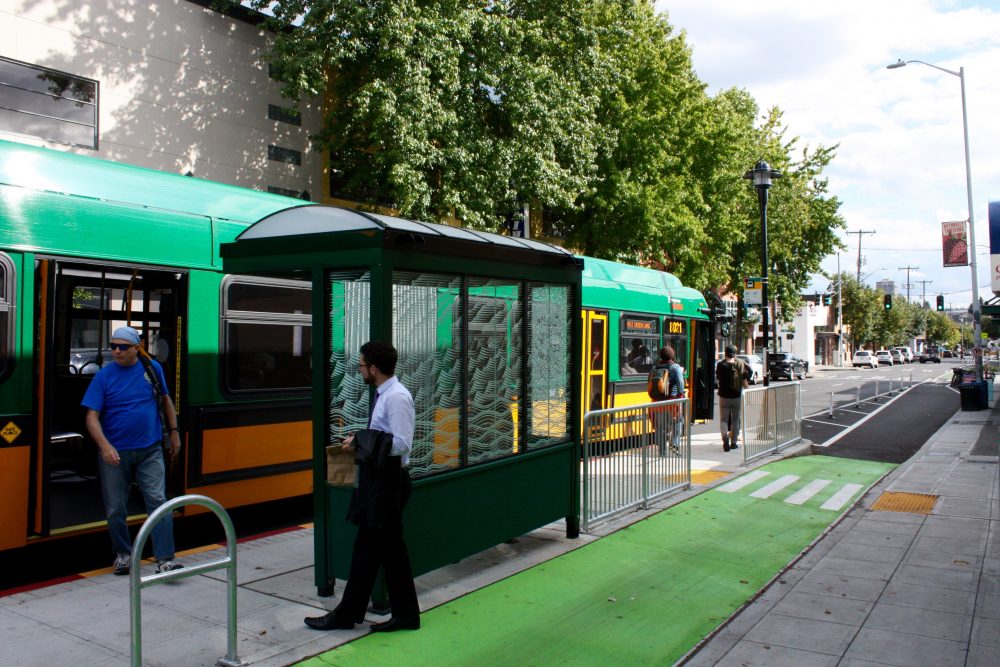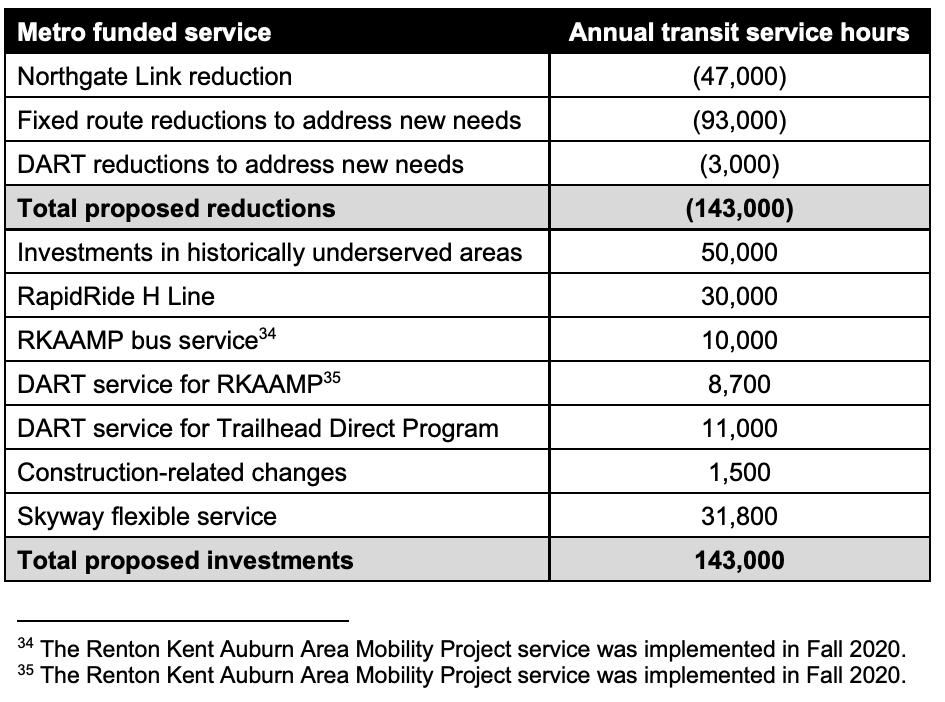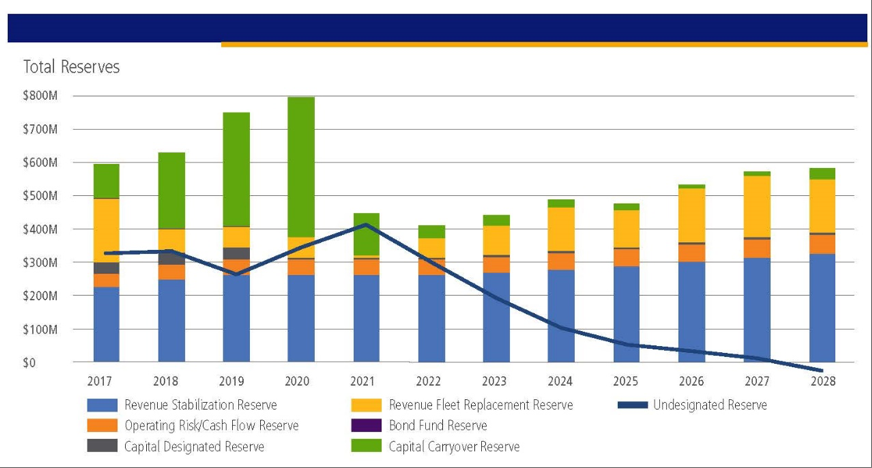
On Tuesday, the Metropolitan King County Council approved a $2.67 billion biennial budget for King County Metro. The budget will provide funding for the agency through 2022 and represents a 15% increase over the previous biennial budget. While this is much greater than the rate of inflation over that time period, a combination of wages and other operational cost increases has blunted the impact of the budget increase amid a pandemic that has reduced rider demand, farebox revenues, and sales tax collections. Thus, Metro has reduced service to 85% of pre-pandemic levels, cut back on capital investments, and dipped into rainy day reserves to cover revenue shortfalls amounting to $410.3 million.
Because of the collapse in farebox revenue, the county council has also approved an ordinance suspending Metro’s farebox recovery targets for the next two years. Ordinarily, Metro would seek at least 25% farebox recovery, but lowered ridership from the pandemic means that the agency is only projecting to reach 15% farebox recovery in 2021 and 18% farebox recovery in 2022.
In tandem with the farebox recovery change, the county council also made another fund management change that suspends how Metro can spend funding to support new service. While the agency was pressed to make service reductions in the wake of falling ridership and revenues during the pandemic, the agency also saw opportunities and needs to reinvest some service hours in other areas that started at a lower level prior to the pandemic. The fund management practices would usually prohibit this since the protocols call for funding the current system before adding to it elsewhere through new service and capital investments, but the policy change makes it more flexible to do given the circumstances.
The financial pinch that Metro is in will result in net job losses, at least on paper. The biennial budget authorizes 5,126 positions, which is down 145 positions from the previous biennium when 5,271 were funded. Most of those are in bus operations, though train operator positions will grow due to the Sound Transit contract for the Northgate Link extension.
Capital expenditures on the other hand are a mixed bag given that they are higher on balance than the previous biennium, but cutbacks are still happening from what had been planned for this biennium. The non-fleet infrastructure capital program had originally been pegged at $663.1 million for the new biennium, but the adopted capital program reduces those expenditures to just $554.4 million, pushing the capital program out into other years in the decade when recovery and other financial resources may make larger capital investments feasible. Likewise, fleet capital program also saw a reduction from $221.2 million to $90.0 million. Some carryover carryover funding from the previous biennium, not new appropriations, is padding these programs.

One controversial aspect of the budget is reinvestment of approximately 47,000 annual service hours in South King County after cuts like Route 41 in the North End. The route is planned for deletion as part of the Northgate Link bus restructure affecting North Seattle and North King County routes. Metro considers the Route 41 service hours duplicative once the light rail extension to Northgate opens in 2021. Thus, Metro plans to redeploy those service hours to other areas along with 96,000 annual service hours from other fixed route and Access services.
The approved budget comes with a variety of expenditure restrictions and contingent funding provisos, including:
- $330,000 for ORCA Youth card distributions to students;
- $150,000 for a Shoreline Park-and-Ride transit-oriented development feasibility study;
- $1.99 million to cover the staffing cost of the new Juneteenth paid holiday in 2022;
- $600,000 for a RapidRide restart report for the deferred R (Rainier), J (Roosevelt), and K (Kirkland/Bellevue) Lines that addresses efforts to secure grants, ongoing community engagement and planning efforts, inter-agency coordination, and status of the lines;
- $1 million for reports on Access paratransit service that provide updates service operations, including deficiencies and areas of potential improvement;
- $1 million for a progress report detailing King County Water Taxi expansion and route planning, including $500,000 for King County Water Taxi studies and planning from Kenmore and Shilshole Bay;
- $1 million for a report on Metro’s fare collection system that addresses replacement options and requirements, an equity impact review of a contactless fare system, community engagement, and policy changes that may be required for implementation;
- $5 million for a “reimagining transit safety and security scoping” report in consultation with the King County Sheriff’s Office and stakeholders that examines and considers change to security functions and protocols, particularly through the lens of racial and social justice;
- $5.4 million for a report on the North Link connections mobility project that may reduce or redeploy service hours to other areas; and
- $100,000 for a letter that details plans to update the King County Metro Service Guidelines by addressing restoration of suspended and reduced transit service due to the pandemic and adding more detailed information on service restructuring.

The budget may be shored up for now by delaying capital expenditures (including RapidRide R, half of RapidRide J, and RapidRide K between Kirkland and Bellevue), making one-time adjustments, and dipping into rainy day funds, but that could become problematic in future budgets if the agency is forced to further draw down on reserve revenues. In a report last month, staff warned that if more stable sources of funding are not obtained in the next few years, the agency could be forced to make further cuts by 2025. That could mean cutting back service an additional 13%.
There are two glimmers of hope. Firstly, the budget does not account for the recently-passed initiative in Seattle that will modestly raise the sales tax for transit. The new 0.15% sales tax is expected to provide about $39 million per year in all, buying around 175,000 annual service hours, which Seattle and Metro will need to iron out in the coming months to restore some service in the city.
Secondly, if all the doom and gloom about ridership begins to evaporate next year, there is the possibility that the agency could begin adding back service as fare revenue rebounds. Federal and state grants in support of transit service and capital expenditures could also do a world of good, too, if they somehow transpire.
Stephen is a professional urban planner in Puget Sound with a passion for sustainable, livable, and diverse cities. He is especially interested in how policies, regulations, and programs can promote positive outcomes for communities. With stints in great cities like Bellingham and Cork, Stephen currently lives in Seattle. He primarily covers land use and transportation issues and has been with The Urbanist since 2014.


